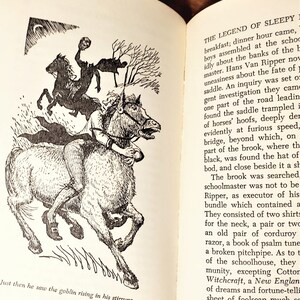

When he wakes, he seems to hear a voice calling his name and soon perceives a stranger standing on the trail, carrying a stout keg on his back. He is fatigued from the climb and sits down to rest in a scenic glen. One day in autumn, he absently wanders high up in to the mountains while hunting squirrels. He takes to roaming the woods with his gun and his dog, Wolf.

Rip must now find a new sanctuary from his wife’s berating. Some bakers have even printed his face on cakes, which the narrator maintains gives Knickerbocker “a chance for immortality almost equal to being stamped on the waterloo medal or a Queen Anne’s Farthing.” Knickerbocker remained devoted to his hobby until the end, despite the fact that it offered so little prestige. Knickerbocker died shortly after composing the history we are about to read, and, though he is not remembered well by critics, commoners in New York remain fond of him. However, even those who doubt the literary merit of his writings must acknowledge his accuracy. Many agree that Knickerbocker’s talents would have been better spent on more important subjects. Knickerbocker was keenly interested in a province in New York at the base of the Catskill mountains, and which was founded by Dutch settlers long ago.He researched the history of this province by listening to first person accounts of Dutch families who lived there. The story opens with a parenthetical note written by an omniscient third person narrator, who tells us that the following tale was written by the late historian Diedrich Knickerbocker.


 0 kommentar(er)
0 kommentar(er)
